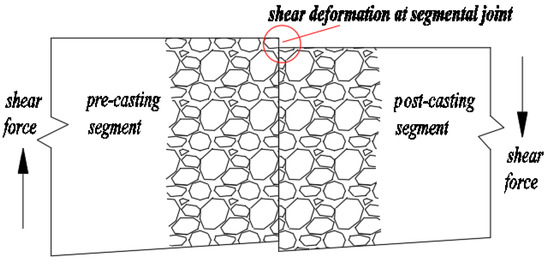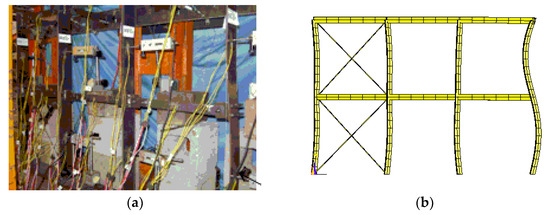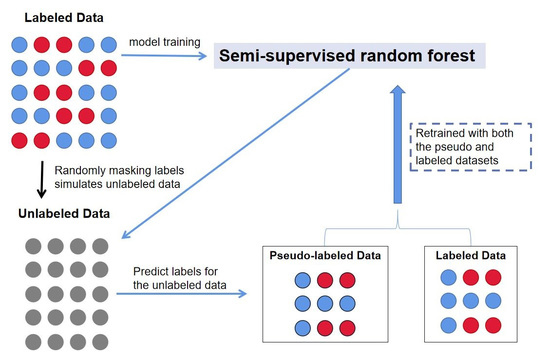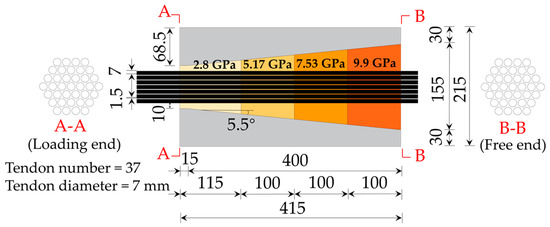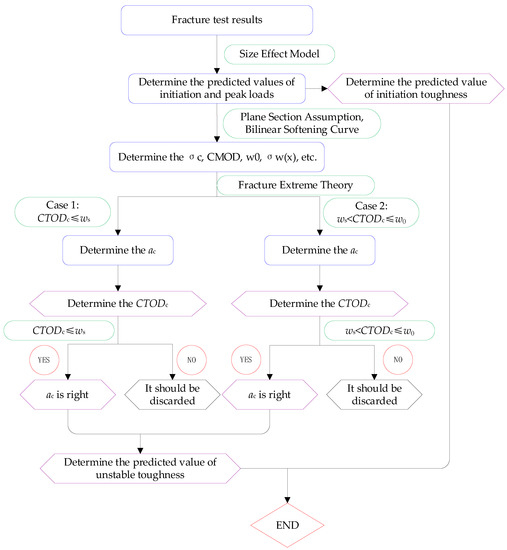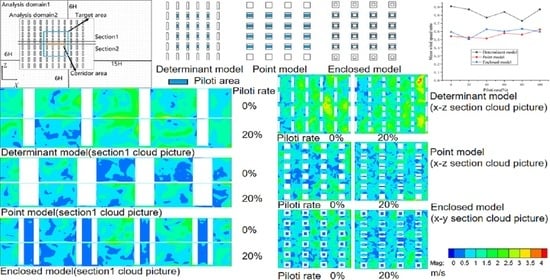Buildings 2023, 13(1), 219; https://doi.org/10.3390/buildings13010219 - 12 Jan 2023
Cited by 2 | Viewed by 2084
Abstract
The excessive deflection of large-span cantilever cast prestressed concrete (LCCPC) box girders has always been a complex problem to be solved in bridge engineering. To analyze the effect of shear deformation at segmental joints on the deflection of LCCPC box girders, comparison tests
[...] Read more.
The excessive deflection of large-span cantilever cast prestressed concrete (LCCPC) box girders has always been a complex problem to be solved in bridge engineering. To analyze the effect of shear deformation at segmental joints on the deflection of LCCPC box girders, comparison tests were carried out on three prestressed concrete (PC) I-girders with joints and a PC I-girder without joints, and a finite element simulation method of segmental joints was proposed based on the tests. Subsequently, finite element analysis was conducted on a test girder and the Assistant Shipping Channel Bridge of Humen Bridge (a PC continuous rigid frame bridge with a main span of 270 m) using this method. The experimental and theoretical analysis results showed that the effect of the shear deformation at joints compared to the deformation at midspan of the girder specimens was negligible. Deformation at midspan of the specimens would not significantly increase, even if shear rigidity at the joints was significantly reduced or there were more joints in the girder specimen. The effect of shear deformation at segmental joints on the deflection of LCCPC box girders was quite small and thus insignificant.
Full article
(This article belongs to the Special Issue Construction Process Monitoring and Structural Damage Identification for Buildings and Bridges)
►
Show Figures
